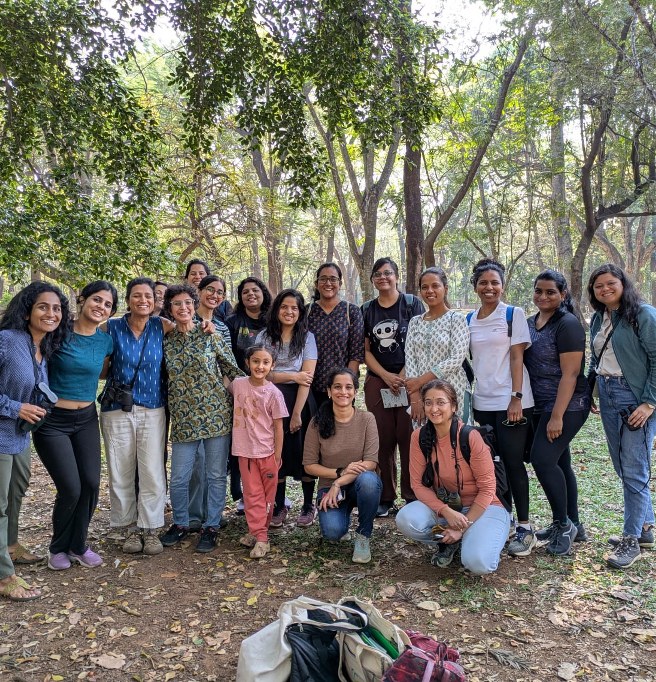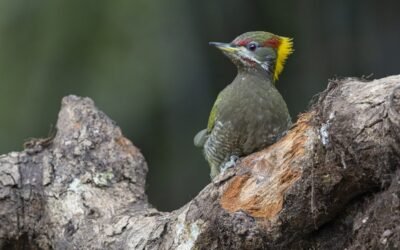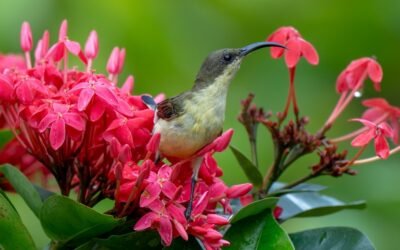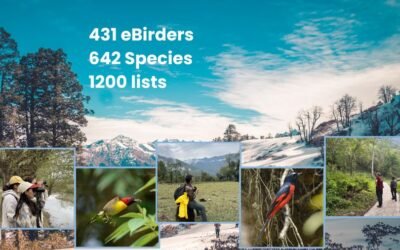All Women Nature Walk—16th Outing at Cubbon Park
The Bangalore Chapter of All Women Nature Walks (AWNW) held our 16th outing on Sunday, 23rd February 2025, at Cubbon Park. We were about 18 women who came together for this event. This walk was organised in collaboration with Nadhi — She for Climate, our community dedicated to inspiring women in climate action through networking, mentorship, and skill-building.
We began our walk with a brief introduction about All Women Nature Walks—our purpose, frequency, and collective commitment to connecting women with nature.
Our guide and naturalist, Vena Kapoor, then introduced herself and spoke about her work with Nature Classrooms.
Sensory Exploration Activity
After quick introductions, we divided ourselves into small groups of 3-4 and explored with either a Spring Bingo Sheet or a Zine (Sense Exploration) Sheet. The Zine Sheet featured symbols representing our five senses—nose (smell), eyes (sight), ears (hearing), tongue (taste), hands (touch)—plus a heart (emotions). Together, we explored our surroundings and found objects that connected with these categories, reflecting on our emotional connections—Did a particular scent trigger our childhood memories? Did a texture evoke familiar feelings among us?
The Spring Bingo Sheet transformed our walk into an engaging treasure hunt, encouraging us to collectively spot seasonal changes like new leaves, birdsong, spiderlings, or intricate leaf patterns. (Download the activity sheets below!)
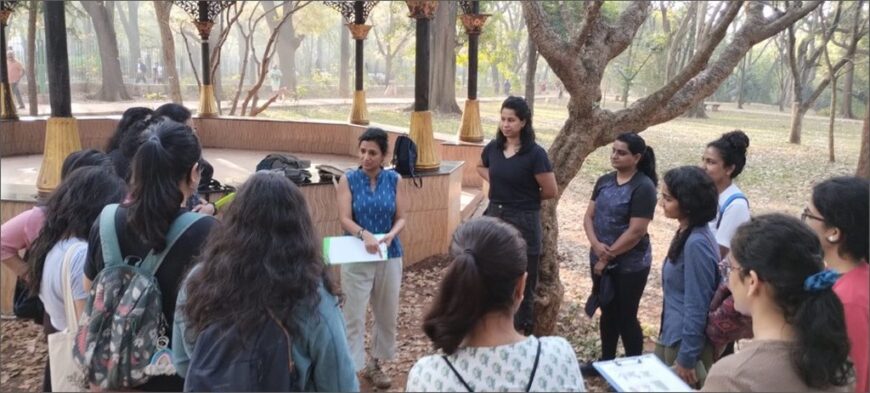
We learned about the Spring Bingo and Sensory Exploration Activity together
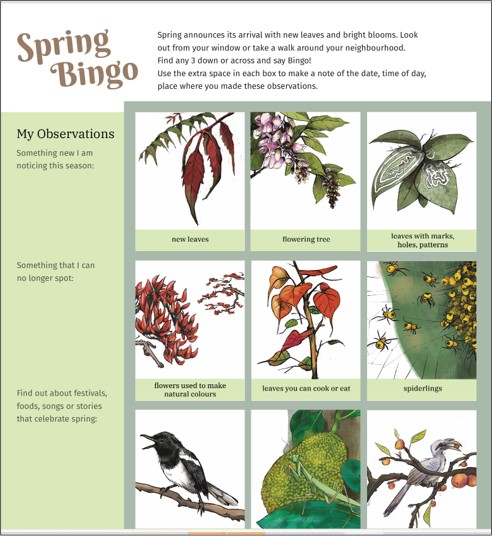
Spring Bingo Activity we used during our walk
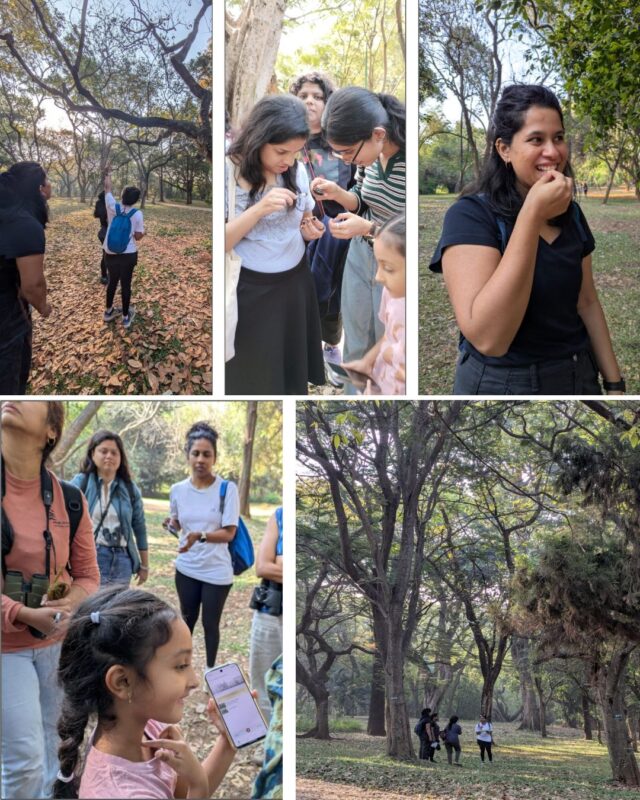
We participated in the Sensory Exploration Activity and learned about the Merlin Bird Id App together
Reflection & Discussion
After the activity, we gathered in a circle to share our experiences. Many of us reflected on how this exercise deepened our observation skills as women.
We discussed the concept of Shifting Baseline Syndrome and Intergenerational Amnesia—how each generation of us perceives our environment as “normal,” even if it has significantly changed over time. We illustrated this with an example: when we visit a tea or coffee plantation from the city, we often perceive it as a beautiful “natural and green” space, unaware that it may have once been a biodiverse forest teeming with wildlife and diverse ecosystems. This sparked a discussion among us on questioning our surroundings:
- Has this landscape always looked like this?
- What changes have we witnessed over time?
- Why do certain organisms have specific structures or behaviors?
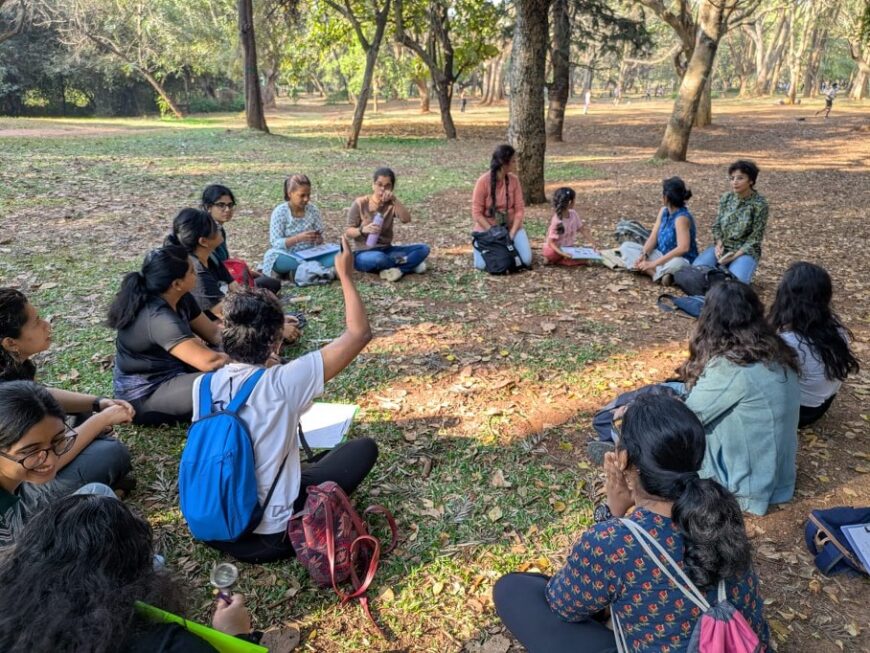
Our reflection and discussion session
We then continued our nature walk together, observing insects, spiders, plants, and birds. Our discussions ranged from natural history and ecological relationships to the unpredictable and bizarre behaviours of nature. We introduced ourselves to citizen science and how we as women can contribute to biodiversity records through apps like:
- iNaturalist — Helps us document species, even if we don’t know the name, as the community assists with identification.
- Merlin Bird ID — Assists us with bird identification using sound recognition and a step-by-step guide, making it beginner-friendly for all of us.
Encouraging Curiosity
A key takeaway from our walk was the importance of curiosity for us as women. Many of us grew up in systems that discouraged questioning, yet curiosity is at the heart of our observation, awe and discovery. By cultivating a habit of inquiry together—
- Why does a spider have this shape? Do all spiders build the same kind of webs to catch prey?
- Do all spiders live in similar habitats?
- Why is this bug called an assassin bug?
—we developed a deeper appreciation for the natural world.
This activity provided a fresh perspective for us as women, encouraging us to move beyond just taking photos and toward engaging more deeply and affectionately with nature as a community.
Useful links
- Critter Photos from this walk
- Bird list for this walk
- Downloadable Bingo Sheets
- Downloadable Pocket Guide on Insects and Spiders by Vena Kapoor
- Bird Pocket Guides by Early Bird
- Merlin Bird ID App
- eBird App
Acknowledgments
A huge thank you to Neha Satheesan, Malvika Vaz, Shalini Bharat, and the entire Nadhi team for coordinating this walk. Special thanks to Vena Kapoor for leading the session and sharing her expertise!
Ready to reconnect with nature? We’d love to have you join our next walk
- Stay up-to-date on upcoming walks and events by following us on Instagram
- Have any questions? Feel free to reach out to us at awnw.india@gmail.com

